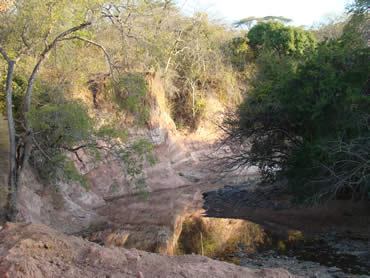Mesozoic
The Cretaceous Period (144 – 65 million years ago) represents a critical time in Earth history, as it has been hypothesized that certain groups of modern animals, including mammals and birds, originated during this time. Moreover, the end of the Cretaceous marks the extinction of other groups (such as nonavian dinosaurs) that previously dominated the landscape. In recent years, fossil vertebrates recovered from portions of the former southern supercontinent Gondwana (including Madagascar, South America, India, Antarctica, and circum-Saharan Africa) have yielded conflicting hypotheses about Southern Hemisphere faunas during the Cretaceous Period. Notably absent from such analyses, however, are Cretaceous-age vertebrate fossils from the critical region of sub-equatorial Africa.
Since initiating the Rukwa Rift Basin Project, we have recovered many groups of vertebrates that were previously unknown from Red Sandstone Group deposits, including fishes, turtles, crocodyliforms, sauropod and theropod dinosaurs, and gondwanatherian mammals (see overview in O’Connor et al., 2006) – PDF). These fossils were found in a sedimentary rock sequence known as the Galula Formation, deposited during the middle Cretaceous (approximately 100 million years ago). The developing Rukwa Rift Basin fauna from southwestern Tanzania constitutes an important addition to the vertebrate fossil record necessary for evaluating and refining large-scale hypotheses related to Gondwanan vertebrate paleobiogeography during the last stages of the Mesozoic Era.

